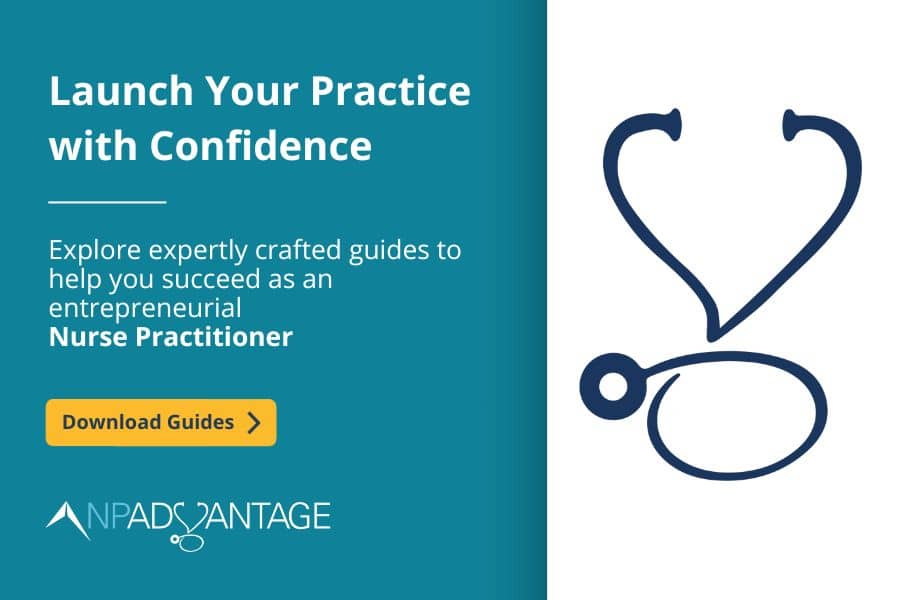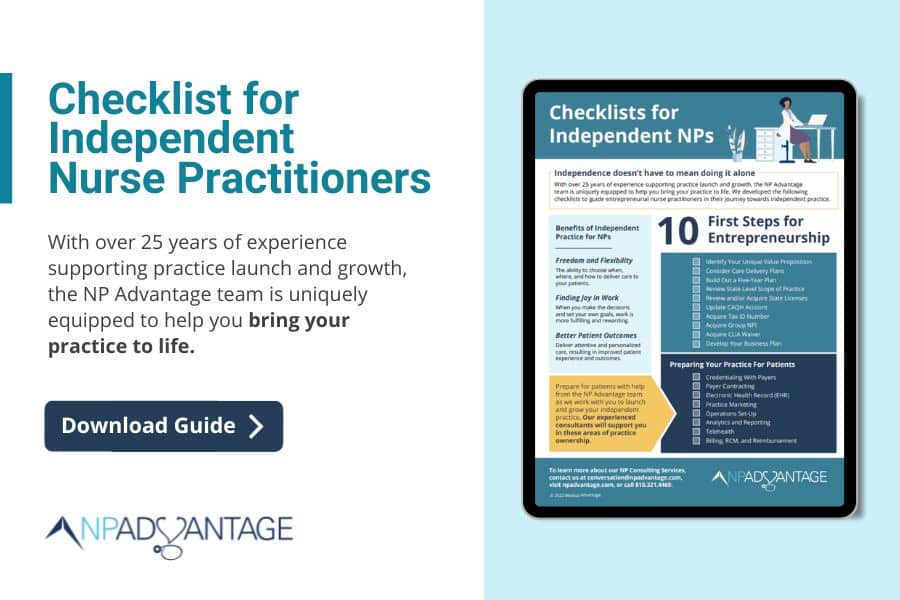As a Nurse Practitioner, you’re likely familiar with the credentialing and payer contracting processes, and likely want to avoid involvement in what can be a time-consuming, discouraging, and overwhelming series of events. However, understanding these processes or finding capable resources to manage the process is an essential element of practice ownership. At NP Advantage, we empower you to be involved with credentialing and contracting, without draining your resource of time and energy. With trusted guides and advocates, credentialing and payer contracting can be a positive and effective process that establishes a strong foundation of healthy relationships with payers based on your vision and mission for the communities you serve. With our help, you can see the established process elevated to helping the system work for you with regards to reimbursement opportunities and financial sustainability.
If you are currently working as an employed NP, you may not be aware of the Nurse Practitioner credentialing process because your employer likely has done your credentialing and enrolled you in the contracts they have negotiated with the payers. As you start your journey to opening your own practice, a great first step would be to ask your employer which payers you are currently credentialed with. Armed with this information, you can verify with each payer whether you are credentialing as a new provider or enrolling as a previously credentialed provider to new contracts for your practice. If this sounds confusing, take heart, we are here to help you sort through such things!
Another area to educate yourself in is around your CAQH (Council for Affordable Quality Healthcare) account. If you don’t know whether you have an account or are not familiar with your login and password, you can request this information from your employer. CAQH is a non-profit collaborative database that is utilized by many payers for the efficient collection, storage, and updating of necessary documents for the credentialing process. (Getting started with CAQH is a simple process that an NP leader should take as an initial part of the credentialing process. Link to CAQH Getting Started: https://proview.caqh.org/pr/registration
It’s important to update your CAQH account every 3 months so that you have the most up-to-date documents and information regarding your practice availability to those payers that use the CAQH account as the source of truth for your credentialing, contracting, and ongoing participation with their plans.
As you start the credentialing process for your new business, you may need to apply for a Tax ID Number (TIN) and possibly a group NPI number. Our NP Advantage consultants can help you understand which is best for your new practice and provide the resources you need to submit complete and accurate applications.
Nurse Practitioners should be aware that each document, license, and certification may take several weeks to obtain. The credentialing process is dependent on each payer with regards to length of the process, required documentation, and application process. If it is your first time credentialing, there is more involved than if you are re-enrolling.
While the independent Nurse Practitioner may be tempted to leave the entire credentialing process to others, it is wise to understand the CAQH process and know the necessary steps to assure accuracy and completeness – even when working with a trusted advisor. Misinformation, outdated documentation, or missed steps can delay the credentialing process for the NP and ultimately delay your opportunity for reimbursement.
Having trusted advisors who initiate and monitor the process is the key to effective and efficient credentialing. Partners in your credentialing process have the time to assist in completing applications, monitoring progress, addressing barriers, and communicating with payers. With your greater understanding of the process, and support from your trusted advisors like NP Advantage, credentialing becomes a routine rather than a burden.
For a more comprehensive credentialing process check your state and payer requirements and start compiling the following:
- Active license from the state Board of Nursing
- Tax ID number- including letter of verification NPI number
- Group NPI number
- Autonomous practice certificate, if applicable
- DEA number and controlled substance license(s)
Often considered part of the credentialing process for the NP is the contracting process. While often viewed together, these are two separate and necessary steps on the journey to insurance reimbursement. After the NP is credentialed, a contract must be signed with the payer as the gateway to the ability to bill claims and receive reimbursement. Once the contract is signed, the payer will enroll the Nurse Practitioner with the contract and the credentialing process is complete.
As mentioned above, the Nurse Practitioner should also establish reminders for themselves to update their CAQH account every three months as an out-of-date account can lead to credentialing, reimbursement, and other delays. While this task is often delegated to staff, it is something that the NP should have oversight of to avoid it falling through the cracks.
Trusted advisors should be counseled about your payer contracts before you sign them. Having experienced partners to negotiate, confirm, and question terms, and legal counsel to review documents is a wise business practice.
While the credentialing process for the NP is potentially long and convoluted, surrounding yourself with experienced professionals with knowledge and proven resources helps to simplify your journey.
NP Advantage Can Help
NP Advantage assumes the role of trusted advisor and advocate, as we take on the time-consuming tasks and oversight required in the NP credentialing process.




